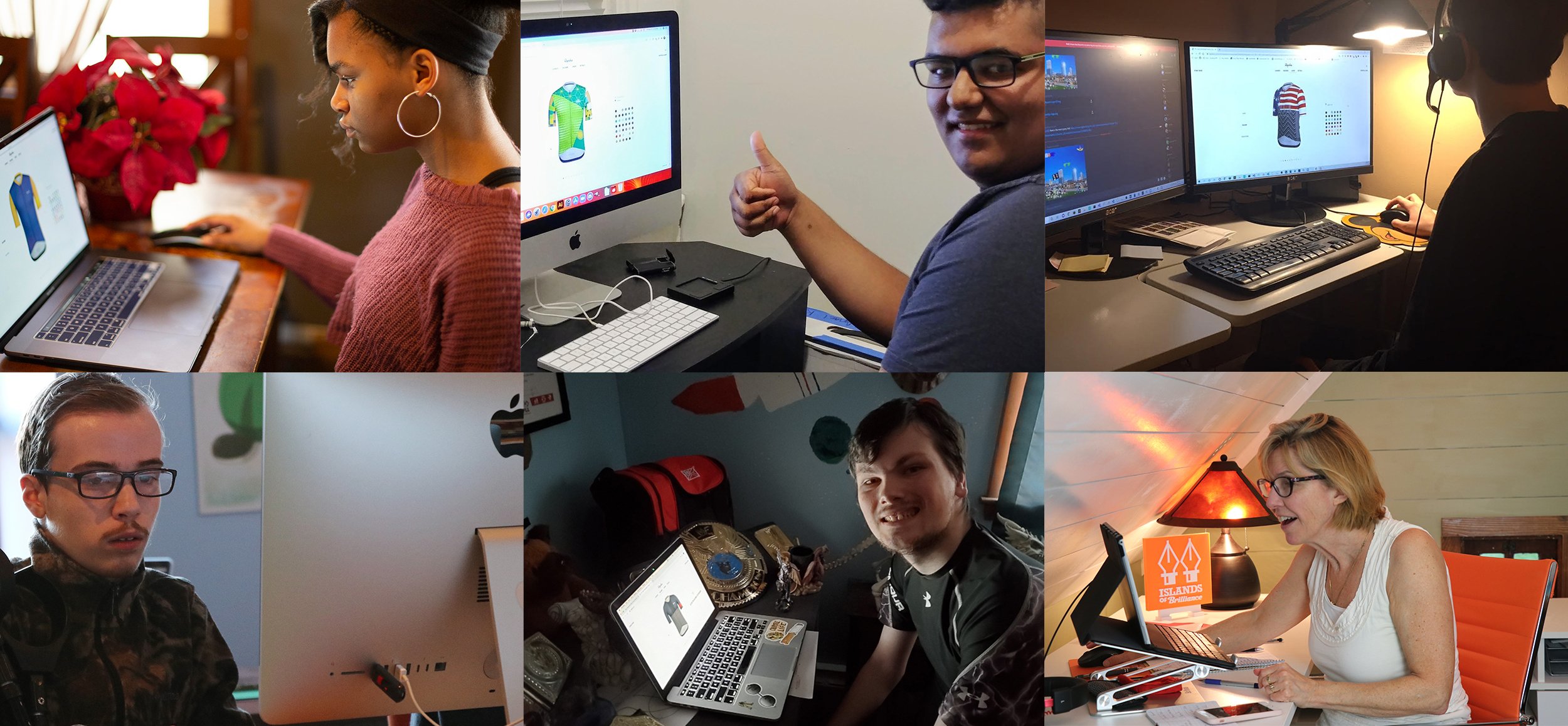Summer + Transition
Summer – it should be one of the best parts of the year. No school, no structure, not a care in the world. And so many options for how to fill each day. I remember loving waking up each morning, and feeling relaxed and confident, knowing that I could do just about anything I wanted. Bike to the beach, hang out with friends, or just sleep in and be lazy. The world was my oyster!
But for many autistics, that is a terrifying prospect – not knowing what is going to happen each day and not having any structure or set routine. Often school, whether a happy place or not, provides that familiar structure and cadence. A common thread I hear from many parents I talk to is that unstructured time generally brings on higher levels of anxiety and more challenging behaviors. In school, that might mean transitioning in the hallways, lunchroom, or even study hall. But in summer, even those times go away. It’s not just an entire day, it’s months of entire days.
If you haven’t already filled each minute of each summer day, I've got your back! Here are a few ideas that might help make that vast expanse of summer a little less daunting…
Create a daily schedule – even if it feels boring.
That means waking up at a consistent time, getting dressed, brushing your teeth, combing your hair, all of it! Even planning a specific breakfast (including clean up) each day, such as cereal on Mondays, toast on Tuesdays, and waffles on Wednesdays, you get the idea…! After that, what other daily routines can be added? These tasks could be learning opportunities or just fun! Recycling gets picked up on Fridays – put it on the schedule. Getting the mail each day – put it on the schedule. Free time? Screen time? Friend/Peer interaction time? Putting as much structure into each day, from sunup to sundown, put it on the schedule. If you can add visuals – even better! That could be the actual pictures, things cut from magazines, or drawing it out. Predictability will provide a chance to introduce some other opportunities, such as…
Planned outings!
Whether it’s a short day trip somewhere OR even a longer summer vacation, involve your loved one in the planning by getting out a calendar (a real printed version that can be written on or a shared Google Calendar). Lock in dates and add those visuals – pictures, maps, whatever plants that seed! These outings don’t need to be elaborate – just planned out! The more you can involve your student, the better – even if that means creating a social story. It could be a trip to the Zoo, Discovery World, Milwaukee Public Museum, or the Art Museum. Plan what to wear, when to leave, and what snacks or fidgets to bring along. Not only will it give you something to look forward to – it will also make the “day-of” activity run so much smoother because you prepared for it! See how this works?
If these types of outings don’t align and you are struggling to get the basics in like grocery shopping, make that the outing! Introduce grocery lists and meal planning into the mix. Again, the more structure and routine, the better. Bonus if you have a picky eater! Make meal planning and “eating routine” its own adventure. Create props out of old milk cartons, turn food into animals or creatures, build faces on your plate with vegetables - be silly. Getting kids involved in planning and preparing food, even if they don’t eat it, is a great way to desensitize food aversion. Washing, and placing items on a platter or plate, encourages touching, smelling, and ideally, eventually tasting. By making the breakfast, lunch, or dinner table fun you can actually turn what may have once been a battle into an enjoyable experience (it’s ok to play with food, just don’t throw or waste it). Here is a link to a segment we did with Fox 6 on how to have fun with food: Selective Eating Hacks
Let’s circle back to something mentioned earlier…
Planning free time, screen time, and friend/peer interaction time.
Things have changed a LOT since I was a kid. We could literally leave our house after breakfast, meander around the neighborhood (which consisted of a few houses, some empty fields, and farmland), and either play outside all day all alone, or connect with kids in the neighborhood for whatever activities we came up with. Sadly today, it’s not safe to tell kids to just go outside and find their way back when they get hungry. Neurodiverse or neurotypical, all families need to find safe places. That means safe places to be with other kids – playgrounds, parks, swimming pools, or other areas out in the community. But there are times when our neurodiverse kiddos might struggle with others. Finding those safe community places can be a little harder. There might be certain times of day that work better – when the crowds aren’t as big or the noise as loud. There might be staff members who are more welcoming or more supportive. Finding a safe group of peers, whether similar in age or not, is wonderful, if you can find that. However, if that is not an option, don’t be afraid to think about online activities as well.
I used to hate the idea that my kids spent so much time in front of a screen. Then one day, I took the time to listen to some of their conversations. With their online peers, they were interacting, laughing, joking, and talking about things that were happening in their lives and in the world around them. It reminded me of the conversations I used to have with my own best friends in our parents' basements so they couldn’t hear what we were talking about! It took some time but I finally realized that for them, their online friends were no different than the friends I grew up with. And my kids now had friends in other states, in Canada, Newfoundland, and were planning for a time in the future when they could actually meet each other in person. Obviously, with any online environment, there is a need for caution. But sadly, that is also true for trips to the mall with all the crazy drivers that are out there now!
The point is, there is more opportunity now than ever before to have a safe supportive virtual environment that provides a sense of connection and community. It’s finding the right balance that makes all the difference. Adding screen time, virtual peer-to-peer interactions, and online classes, into your summer routine – can also help take the pressure off of getting outdoors to do something each and every day.
Oh, and don’t forget to schedule some time to just relax! The art of doing nothing is actually a good skill to have and to practice. Adding reading time, creating time, imagination time, listening time, and simply going outside to watch the clouds drift by – can all be added to the daily schedule.
And in case you need more ideas, here are a few fun resources to share:
PBS KIds: Parent’s Guide “Summer of Adventure”
Reading Rockets: “Get Ready for Summer! Ideas for Teachers to Share with Families”
Education World: “25 Activities to Keep Kids' Brains Active in Summer”
Now, who is ready for summer???
Islands of Brilliance offers summer programming that can be a great resource for summer routines and can help your student feel connected to peers over the summer. Sandbox (including Doodle Lounge described in the blog below) is an online, free-form space for neurodiverse individuals who like to doodle, sketch, and share their creativity in a relaxed environment.
Not sure about online? The second blog below talks about how IOB’s online experience is different at IOB.





